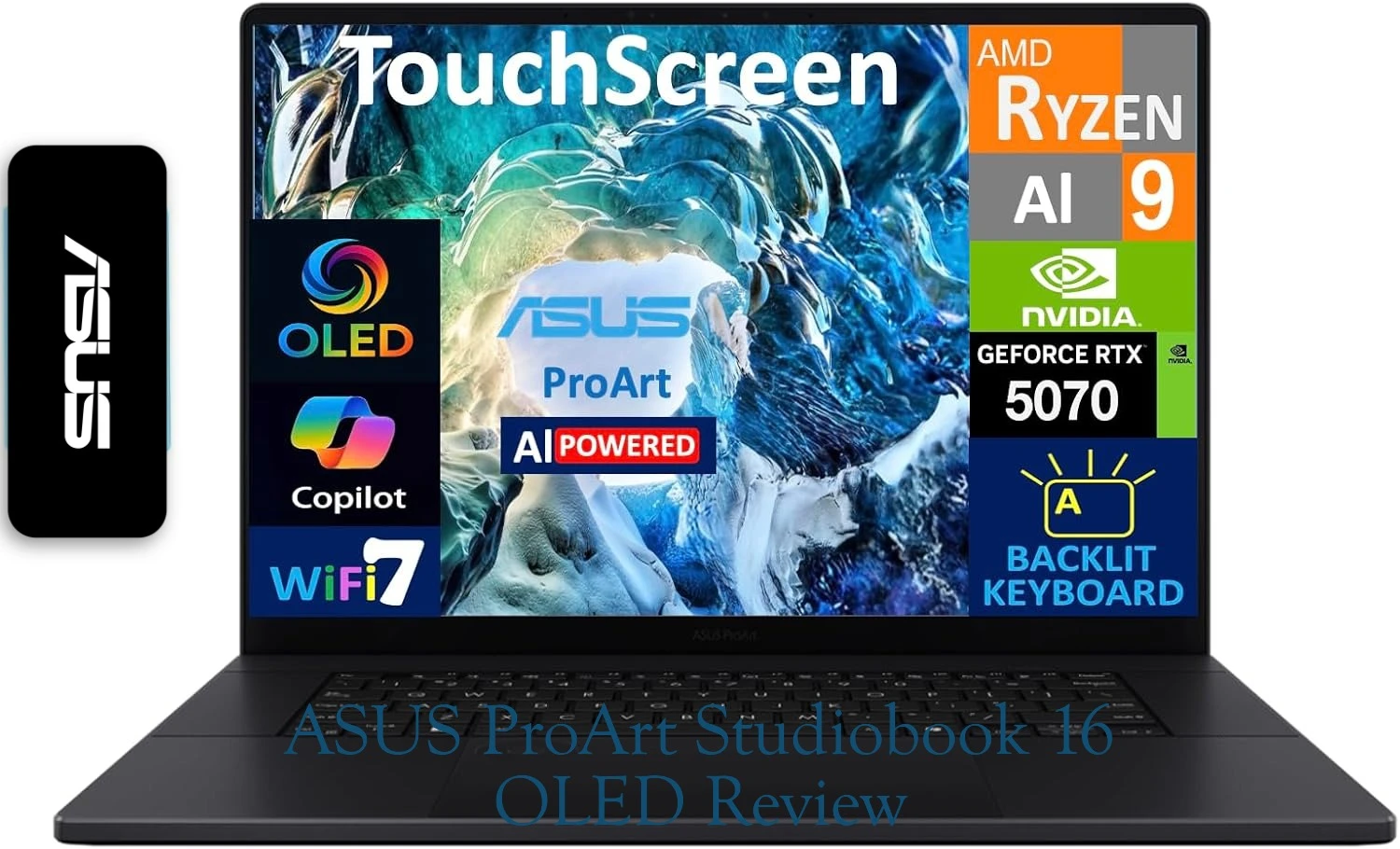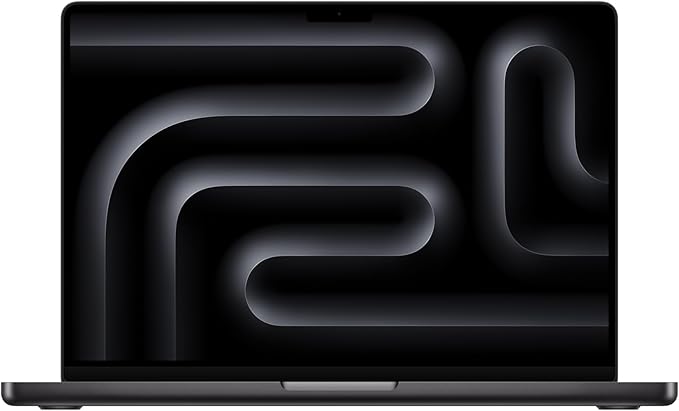If you’re a photographer, video editor, or 3D designer who lives inside creative apps all day, you’ve probably wished for a laptop that’s powerful, color-accurate, and doesn’t choke on big projects. That’s exactly where the ASUS ProArt Studiobook 16 OLED steps in.
This isn’t your average “creator laptop” that’s just a fancy label. The Studiobook 16 OLED is built from the ground up for professionals who care about precision, speed, and reliability — without giving up that beautiful, immersive OLED screen.
Check it out on Amazon: ASUS ProArt P16 AI
First Impressions: Built Like a Pro Tool
The first thing you notice about the Studiobook 16 OLED is how solid it feels. It’s not the thinnest or lightest laptop around, but you can tell right away it means business. The matte finish keeps fingerprints away, the hinge feels reassuringly firm, and everything about it screams “I’m here to work.”
But what really stands out is the ASUS Dial — a little physical knob built right into the deck. It might sound like a gimmick, but trust me, once you use it in Photoshop, Premiere, or Lightroom, you’ll wonder how you ever worked without it. Zooming, changing brush sizes, or adjusting exposure becomes almost addictive.
Display: Where the Magic Happens
This is the star of the show — a 16-inch OLED display with up to 4K resolution, covering 100% of the DCI-P3 color gamut. Colors look amazingly rich, blacks are true black, and everything feels alive.
If your work depends on color accuracy — like retouching, grading, or designing — this panel is a dream come true. It’s Pantone Validated and factory-calibrated for color accuracy right out of the box.
Sure, OLED displays can be reflective under bright light, but the visual payoff is totally worth it.
Display Highlights
| Feature | Details |
|---|---|
| Screen Size | 16-inch OLED (3.2K or 4K) |
| Color Accuracy | 100% DCI-P3, Pantone Validated |
| Refresh Rate | Up to 120Hz (model dependent) |
| Brightness | 550 nits peak |
| Extra | Some models even have 3D OLED options! |
Performance: Desktop Muscle in a Laptop Body
Let’s talk power. ASUS didn’t hold back here. The Studiobook 16 OLED can be configured with up to an Intel Core i9 HX-series processor and an NVIDIA GeForce RTX 4070 GPU. Translation? This thing flies.
Whether you’re rendering complex 3D scenes, editing 8K video, or juggling a dozen Chrome tabs (we all do it), this machine handles it all without flinching.
Multitasking feels snappy, thermals are surprisingly well-controlled thanks to ASUS’s IceCool Pro cooling system, and fan noise stays reasonable for this level of power.
Performance Specs
| Component | Specification |
|---|---|
| CPU | Up to Intel Core i9-13980HX |
| GPU | Up to NVIDIA RTX 4070 Laptop GPU |
| RAM | Up to 64GB DDR5 |
| Storage | Up to 4TB PCIe 4.0 SSD |
| Cooling | Dual-fan IceCool Pro system |
Battery Life: Good Enough for a Workhorse
Now, let’s be real — no one buys a workstation laptop expecting 12-hour battery life. The Studiobook 16 OLED gives you around 5–6 hours of light use, or 2–3 hours under heavy editing. It’s fine for working on the go, but if you’re rendering videos or 3D models, keep the charger nearby.
That said, ASUS does include fast charging, which can get you back to 50% in about half an hour — handy when deadlines are chasing you.
Ports & Connectivity: Everything You Need
ASUS clearly listened to what creators actually need. You get a wide range of ports, including Thunderbolt 4, USB-A, HDMI 2.1, SD Express card reader, and even an Ethernet port — yes, a real one.
This means you can plug in your camera, external drives, and a 4K monitor all at once, without living in dongle hell.
Port Selection
| Port Type | Quantity / Spec |
|---|---|
| Thunderbolt 4 / USB-C | 2 |
| USB-A | 2 |
| HDMI | 1 (2.1) |
| SD Express Card Reader | 1 |
| Ethernet (RJ45) | 1 |
| Audio Combo Jack | 1 |
Everyday Experience: Designed for Creators
Beyond the specs, what really makes this laptop shine is the experience. The keyboard feels great, the trackpad is large and precise, and the ASUS Dial truly saves time in editing software.
Performance is consistent even under heavy workloads — no random throttling or sluggish moments. The fans do ramp up, but not to an annoying level. It’s a tool you can rely on day after day.
And let’s not forget: the sound system (by Harman Kardon) is surprisingly full, making it great for content review or casual listening.
Pros and Cons
| Pros ✅ | Cons ❌ |
|---|---|
| Gorgeous 16” OLED display with pro-grade color | On the heavier side (around 2.4 kg) |
| Top-tier performance for creative workloads | Shorter battery life under load |
| ASUS Dial is a real productivity booster | Can get warm during long render sessions |
| Tons of ports and upgrade options | Premium price tag |
| Solid build quality and cooling system | Not ideal for casual users |
Who Should Buy the ASUS ProArt Studiobook 16 OLED?
This laptop is not for everyone. It’s for people who create — photographers, editors, animators, architects, designers.
If you live inside Adobe Creative Cloud, DaVinci Resolve, or Blender, this machine will feel like home.
If you just want to browse, stream, and type, it’s probably overkill.
But if you value a stunning OLED screen, reliable performance, and a build made for professionals — the ProArt Studiobook 16 OLED is easily one of the best creator laptops of 2025.
Comparison: Studiobook vs. the Competition
| Feature | ASUS ProArt Studiobook 16 OLED | MacBook Pro 16 M3 | Razer Blade 16 |
|---|---|---|---|
| Display Type | 4K OLED | mini-LED | IPS |
| Color Accuracy | 100% DCI-P3 | 98% DCI-P3 | 100% sRGB |
| GPU Power | RTX 4070 | M3 Max GPU | RTX 4070 |
| Upgradeability | RAM & SSD upgradable | Not upgradable | Limited |
| Best For | Multi-platform creative pros | Apple ecosystem users | Gamers & editors |
Final Verdict: A True Creative Workhorse
The ASUS ProArt Studiobook 16 OLED is not a flashy consumer laptop — it’s a serious creative workstation dressed in a stylish, professional shell. It delivers everything it promises:
- a breathtaking OLED display,
- blazing performance,
- and smart design choices that actually make your workflow easier.
Yes, it’s pricey and not featherlight, but if your livelihood depends on your creative tools, this machine justifies every penny.
It’s not just another laptop. It’s your portable studio.
FAQs
Absolutely. With RTX GPU acceleration and a color-accurate OLED screen, it’s perfect for 4K and even 8K workflows.
Yes — both RAM and SSD are user-upgradeable, which adds a lot of long-term value.
Roughly 2.4 kg (about 5.3 lbs). Not ultra-portable, but still manageable for travel.
Yes, every OLED panel is factory-calibrated and Pantone Validated.











